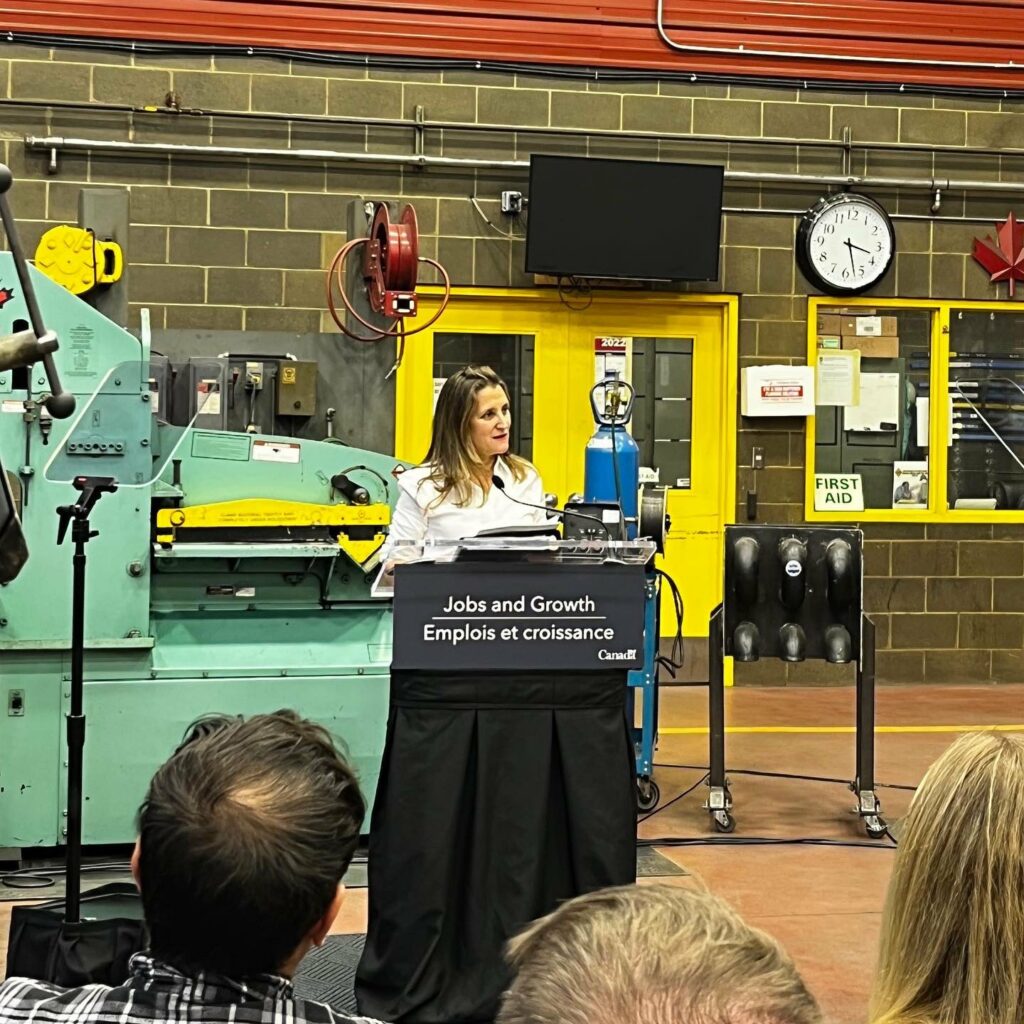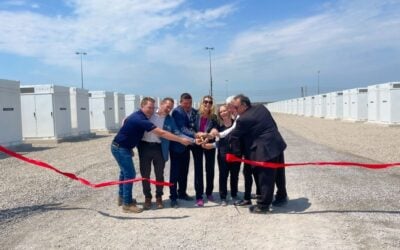
Canada’s government will introduce tax incentives for clean energy technologies, including solar PV, battery storage, and hydrogen.
Announced yesterday by Deputy Prime Minister Chrystia Freeland as part of Canada’s Fall Economic Statement 2022, the move has already been welcomed by renewable energy, energy storage and manufacturing trade groups.
Enjoy 12 months of exclusive analysis
- Regular insight and analysis of the industry’s biggest developments
- In-depth interviews with the industry’s leading figures
- Annual digital subscription to the PV Tech Power journal
- Discounts on Solar Media’s portfolio of events, in-person and virtual
The government proposes to introduce a refundable tax credit equivalent to 30% of the cost of capital investment into electricity generation systems, stationary electricity storage systems, low-carbon heat equipment and industrial zero-emissions vehicles and related charging or refueling equipment. Projects that do not meet requirements on local labour conditions will get a 10% reduction in the minimum tax credit rate
A higher rate of investment tax credit, 40%, will be available for hydrogen projects that meet all eligibility requirements on carbon intensity, with incentives reducing as related carbon emissions go up. As with generation and storage, meeting labour conditions will be worth 10% of the credit.
“With major investment tax credits for clean technology and clean hydrogen, we will make it more attractive for businesses to invest in Canada to produce the energy that will power a net-zero global economy,” Freeland said.
The move comes close on the heels of the US’ Inflation Reduction Act (IRA), which introduced an investment tax credit for standalone energy storage projects, extended the existing solar PV ITC and wind production tax credits for 10 years and introduced incentives for manufacturing and hiring domestically.
Canada’s government has sought to close a competitive gap that the US’ IRA legislation’s US$369 billion of climate spending and investment looks set to open.
As with the IRA in the US, the details or the implementation of new tax credit incentives in Canada are still to be determined.
However, the Canadian government did say that electric generation systems eligible include solar PV, small modular nuclear reactors, concentrating solar power (CSP), wind, hydroelectric, tidal and wave power.
All forms of electricity storage systems that do not use fossil fuels are eligible, with the government highlighting that this includes but is not limited to: batteries, flywheels, supercapacitors, magnetic energy storage, compressed air energy storage, gravity energy storage, thermal energy storage and pumped hydro.
Also in response to the IRA, Canada wants to boost its own competitiveness and attractiveness to investment with the creation of a CA$15 billion (US$11.05 billion) ‘Canada Growth Fund’. The country’s past economic stability has been built largely on natural resources and emissions-heavy industries, but the fund is aimed at facilitating private investments into an increasingly low-carbon economy.
The government hopes that the CGF can be set up in the first half of next year, with its strategic aims including reducing emissions and helping Canada meet climate targets, and accelerating investment into technologies like low-carbon hydrogen and carbon capture and storage.
Tax credits welcomed by industry
National renewable energy association CanREA welcomed the Fall Economic Statement and said the inclusion of the clean energy and hydrogen tax credits reflected recommendations it had made in its advocacy work.
“This is a positive sign that Canada’s government is taking bold action to decarbonise with investment certainty for solar energy, wind energy and energy storage,” CanREA’s VP of policy and government affairs Brandy Giannetta said.
The generation and storage ITC is expected to cost CA$6.7 billion over five years and will be available as of the first day of the 2023 budget and will then be in place until 2035, with a phase-out period from 2032.
Earlier this week, Energy-Storage.news published a Guest Blog from Justin Rangooni, executive director of trade group Energy Storage Canada.
Rangooni wrote that energy storage has a vital role to play in the future electricity system in all provinces of the country, but that policy and regulation haven’t yet caught up. With a recent report commissioned by the trade association finding that Canada needs between 8GW and 12GW of storage by 2035 to be on the right path to net zero by 2050, the need for supportive policy is urgent, he said.
The country has less than a gigawatt of installed energy storage capacity today and “policy makers and government agencies need to coordinate a revamp of the entire regulatory and legislative framework to include and accommodate energy storage,” Rangooni wrote in the blog.
Yesterday, Energy Storage Canada reacted enthusiastically to the Fall Economic Statement with the following tweet from its official account:
“We’re thrilled to see the govt’s commitment in their fall economic statement to keeping pace with the US Inflation Reduction Act with a 30% refundable ITC for all forms of #EnergyStorage. Such competitive measures are critical to ensuring Canada’s success on its path to #NetZero.”
In early October, the provincial government of Ontario began a push to procure between 1,500MW to 2,500MW of energy storage to help meet projected shortfalls in electricity at peak times, which despite happening just a few weeks ago, was perhaps the most significant energy storage policy development in Canada until yesterday’s announcement.






